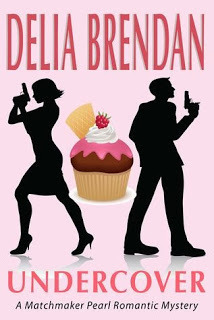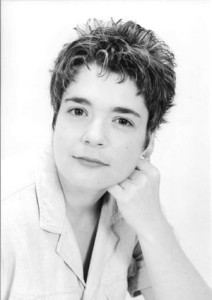Does Mind Mapping Hurt?
by Delia Brendan, @deliabrendan
 Years ago, I went to a plotting workshop. The workshop leader described a process involving white poster board and multi-colored sticky notes. She described how each sticky note color corresponded to various plot elements. At the end of the exercise, she showed the group a completed plot map and explained how this process could help you from getting bogged down during drafting.
Years ago, I went to a plotting workshop. The workshop leader described a process involving white poster board and multi-colored sticky notes. She described how each sticky note color corresponded to various plot elements. At the end of the exercise, she showed the group a completed plot map and explained how this process could help you from getting bogged down during drafting.
As a visual person, I loved the concept of working from a map. So, I dutifully went out and bought white poster board and enough sticky notes to outfit a corporation. As an organizationally-challenged over thinker, I was soon mired down in details. Was Dr. Venom’s mother from Siberia a blue sticky note because she was related to a bad guy or a green sticky note because she befriends the heroine? No surprise, I never wound up with a plot map and I’m still pulling sticky notes out of sock drawers and couch cushions.
If I could get my information organized in virtual notebooks, was a free tool that would help me organize my plot too much to hope for?
It turns out it’s not. Now, when I say “mind mapping,” I need you to take a deep breath. It’s a terrible name as it conjures images of being strapped in a chair as electrodes are attached to your temples. It’s not something that one might think would help creativity, but it is invaluable.
“Mind mapping” is not new. It’s just a description of how to organize your thoughts. In terms of the software, a map is nothing more than that huge piece of white poster board we lugged home from the office supply store. Topics and subtopics are the sticky notes.
Let’s look at this in action with the story of Sleeping Beauty. As you dig back in your Disney brain, recall that the story opens with the birth of the King and Queen’s daughter. An evil fairy casts a spell on the child that when a spindle pricks her she’ll die. A good fairy can’t remove the curse, but she alters it. Instead of dying, the princess will fall into a 100-year sleep and be awoken by the kiss of a prince. Fifteen years later, the princess accidentally triggers the curse.

The name of the story is our starting points, my first two topics are the key events: the curse and triggering the curse.
The activities that follow each of those events are subtopics. There’s no right or wrong way to create a map. You start from the point that makes sense to you.
Depending on the software, you can customize the map. If you enjoyed the sticky notes colors, rest assured you can color your topics. Even better, you can change Dr. Venom’s mother from a blue to a green without having to find where you put the green sticky notes. Topics can be rearranged by clicking and dragging. You can also order items across branches with markers or create relationships as you build a chapter structure.
When I was writing the first Matchmaker Pearl romantic mystery, Undercover (2013), I appreciated the ability to open and close branches on the map until I needed them. It helped avoid being overwhelmed by an intricate and complex plot structure.
So, what application should you use? The answer is the one you like. What makes complete sense for me may not for you. You’ll need to try a couple to find the best fit.
Here are a few products to get you started:
XMind—(Windows/Mac) Xmind is very popular. I was amazed at how came in the free version. It’s an application, so you need to spend a few minutes to understand how it works. It is very right-click oriented as you add topics and subtopics.
MindJet Maps—(Windows/Mac/iPad) MindJet is aimed at a professional audience and the computer version price reflects that. However, I discovered that the iPad version is free. That is great news because the iPad app is terrific. It has a streamlined interface, easy to understand, and the tutorial is very helpful without being invasive. You can either save maps to defined storage areas, like Dropbox or Box.com, or email them as PDFs or mind map files.
Coogle—(Web) Coogle is a basic free web application. You can sign in with either Google or Facebook credentials. It has a very clean web interface and can handle basic mapping. This is may be a good place to start, but I’m concerned that this product may be too limited if you have a complex plot.
Before diving in, I have two pieces of advice. First, whenever you’re downloading software make sure to take a few minutes and look at the licensing agreement. It’s not breathtaking reading, but it’s important to understand the parameters and what they do with your data. Second, spend a few minutes with the tutorials. Each product has it’s own nuances and this will save you time.
 Delia Brendan was born and raised in Washington state. She graduated from the University of Southern Mississippi with the kind of doctorate that you don’t want when you’re bleeding or trying to determine if that lump “means something.” Her careers have always involved writing, be it technical writing, legal writing, or just your average system down messages.
Delia Brendan was born and raised in Washington state. She graduated from the University of Southern Mississippi with the kind of doctorate that you don’t want when you’re bleeding or trying to determine if that lump “means something.” Her careers have always involved writing, be it technical writing, legal writing, or just your average system down messages.
A chance meeting of Pearl Waterman in 2012 brought a desire to share her adventures and explain what really happens in Dandelion. She is married to writer Sean Brendan Brown and they live in Olympia with a very gray, fat little beagle named Katie.
The post Does Mind Mapping Hurt? appeared first on Elizabeth Spann Craig.



